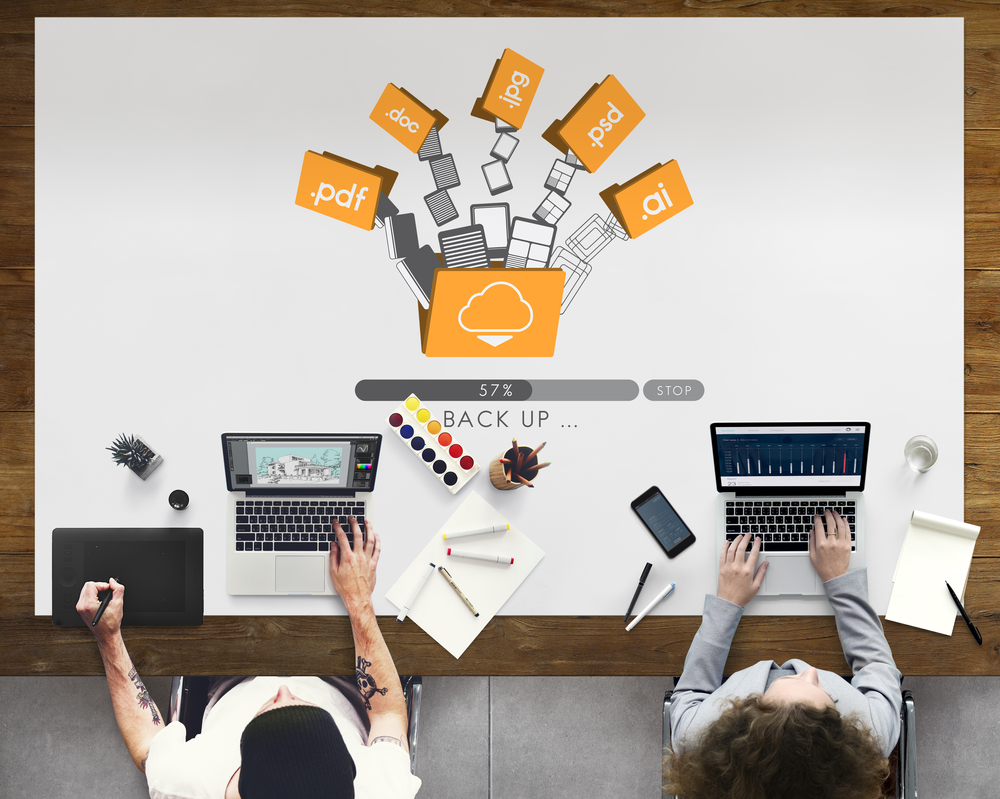
Communications service providers: Don't let IPv4 exhaustion stop your growth
As rural broadband initiatives help bridge the digital divide, communications service providers have a wealth of opportunities to add subscribers, expand territory, and grow their business. However, they will first need to address the challenges posed by IPv4 exhaustion -- and its impact on the cost of new subscriber IP addresses.
Since November 2019, when the final allocation of publicly available IPv4 addresses was made, new IPv4 addresses have been obtainable only at high open market prices. There is a virtually unlimited stock of IPv6 addresses available, but migration to the new standard is a highly complex prospect and impractical in the short term for many communications service providers. They need a more feasible and affordable way to support new subscribers.

4 surprising ways COVID-19 has forced the world to innovate
Digital transformation is a conversation that is and was taking place before COVID-19. Businesses wanted to know how to become more competitive, reactive, and efficient, and how services for users can be improved. McKinsey’s global survey of 889 executives reported that COVID-19 certainly accelerated digital transformation by several years in some sectors. Many of these changes are expected to remain in place long-term.
Here, we take a look at the top COVID-19 tech trends and how they will remain part of our lives in the future, post-pandemic.

5 amazing new uses for AI in 2021
Artificial Intelligence (AI) has quickly emerged as a game-changing technology, often helping researchers uncover insights much faster than they otherwise could.
Here are five impressive ways that researchers have already capitalized on AI this year.

Predictive maintenance can save millions for process manufacturers
Predictive maintenance, or PdM, is a rising star for process plants. It’s a new approach to maintenance planning that uses industrial Internet of Things (IIoT), big data, and machine learning to track the condition of plant equipment and detect the first signs of impending part failure.
Predictive maintenance is a specific application of predictive analytics for plant equipment. By issuing early alerts about potential failures, PdM enables maintenance crews to schedule repairs before the part breaks down entirely, at a time that’s convenient for them. PdM really showed its worth during COVID-19, as many plants operated on a skeleton staff with maintenance teams only coming on-site at intervals.

How FinTech and digital currency unfolds global technology disruption
The term FinTech has been coined quite recently. However, this does not change the fact that Finance and technology have always been intertwined. Way back in 1866 the first transatlantic cable was laid, which then became the backbone for the globalization of finance. Next in 1918, the first electronic transfer of money was conducted using Morse code technology. In the 1950s, credit cards, another digital payment medium, was launched by American Express and Diners Club. This event can officially be called FinTech 1.0.
The actual beginning of modern FinTech effectively dates back to 1967 when the first ATM machine was used by Barclays in 1967 and the period was called FinTech 2.0. Owing to the development of technologies in communication and transaction, the world saw its first digital stock market, which marked the beginning of online financial markets. The advances didn’t stop there.

Don't be fooled into not backing up your data!
We celebrated World Backup Day last month. Started in 2011 by digital consultant Ismail Jadun it is observed on March 31st every year -- a date chosen because it’s the day before April Fools Day… and of course you’d have to be a fool not to backup your data!
This especially recognized day is a strong reminder of the increasing role data plays in our lives and of how critical it is to backup all of your data. Regardless of the size of your organization, it’s likely that data is an essential aspect of running it. If you don’t yet have a solid plan to keep your data safe, there are four things you should consider:

Interaction Analytics supports compliance in your contact centers
Every contact center needs to track its compliance with laws and regulations, yet so many make it tougher on themselves to do so. Reviewers screen call after call, checking off compliance steps and ensuring agents meet expectations. But with potentially millions of calls to screen, manual compliance tracking becomes an impossible task -- and workaround solutions can leave centers open to damaging compliance failures, potentially costing companies millions of dollars in fines.
The cost of human error is too high, but manual processes are too overwhelming, time-consuming and expensive. Automating compliance monitoring can remove much of the burden from compliance managers and officers and decrease their chances of human error. Technology like Interaction Analytics helps reduce the traditional pain-points and limitations in reviewing contact center compliance while also unlocking insights on larger trends and ways to improve contact center operations.

Save 60% on the updated Avast Antivirus 21.3 which boasts better scanning performance, Rescue Disk improvements and more
Avast Antivirus 2021 has just received its April update, and it's an important one. In addition to the usual array of bug fixes and improvements, there are also some serious changes and additions to enjoy. Chief among these are big improvements to scanning, helping to boost the overall performance of the software.
There have also been changes to the way notifications work in the app. While you, of course, want to be made aware of things that need your attention, an overload of notifications can be annoying. And it is with this in mind that the latest version of the app will no longer show you pop-up messages when you have the antivirus tool open. But it does not end there.

Telematics: 10 must-have features in 2021
Vehicle-tracking software has been evolving to a point where real-time data is not only available centrally but easily accessible to a mobile team of drivers and fleet professionals. On-board tracking, video, and sensors are now being combined with AI processors that interpret as well as record the road ahead. Simply put, our vehicles are now smarter than us -- in a good way.
By using data, connectivity, and AI-powered analysis, companies can have a huge competitive advantage if they can act on the issues at hand. Drivers have access to predictive technology that identifies road signage, driver behavior, weather conditions, and road condition to help guide them to the safest path through traffic, as well as the most efficient overall route.

Overhauling Zero Trust: How to enforce the security you need
The need for organizations to recalibrate and reprioritize their Zero Trust efforts has been abundantly clear for years, and recent vulnerabilities like those with Microsoft Exchange and Google Chrome have further magnified the need for improvement. However, the conversations surrounding how to mitigate these threats and adopt a framework of actual Zero Trust have become increasingly oversaturated.
Rather than throwing around industry buzzwords and "talking the talk," the cybersecurity community must understand that the luck they’ve encountered playing one of security’s most dangerous zero day games is likely to run out in short order. Instead, they must focus their efforts on "walking the walk" by implementing a model of Zero Trust. Thanks to a recent industry survey and accompanying report, there are a handful of trends that are already in motion as organizations and cybersecurity professionals alike work towards adopting a true Zero Trust environment.

The emergence of an alternative internet
Wow, 2020 was quite the year! Not just because of the pandemic that stopped the offline world, but because of some of the terrifying things that rocked our online world as well.
These are the ones that disturbed me the most:

Punishing the victim won't stop ransomware
Imagine, for a moment, that you own a small business -- say, a regional dairy farm producing milk, ice cream, yogurt, and other products. And, like so many companies in the food manufacturing sector, you get hit by ransomware. You can’t access any of the data you need to run your business -- so you don’t know which products to ship, where to ship them, what prices you’ve negotiated, who’s paid and who hasn’t… everything is locked up. And, the clock is ticking -- you can’t tolerate extended downtime or products will spoil and customers will defect to other vendors.
The ransomware threat actor wants $50,000 to give you the decryption keys for your data. Your cyber insurance company tells you to just pay the ransom and they’ll cover most of it, as long as it doesn’t violate the rules set up by the US Treasury Department’s Office of Foreign Assets Control (OFAC) against paying ransom to gangs or nation states that are under economic sanctions. But, they do some research and determine the ransomware threat actor would fall under these rules, so they rescind the recommendation and will only partially offset what would be an enormously expensive IT consulting engagement to restore the systems in an acceptable period of time.

Improve your business resilience with disaster recovery
No organization has time for downtime in today’s ever-changing business environment. Disruptions including human error, cyberattacks, natural disaster and even business disruption related to the COVID-19 pandemic can wreak havoc on your business and bring it to a standstill. Having a comprehensive disaster recovery (DR) plan is critical for business resilience and the survival of your organization.
So what is a DR plan? It can be defined as a set of processes and techniques used to help an organization recover from a disaster and continue or resume routine business operations. It is a comprehensive plan that combines the roles and functions of IT and the business immediately following a disaster. These plans allow your organization to adapt and recover from any type of disruption while also maintaining normal business operations.

Major app crashes are a wake-up call for organizations to improve their app stability
Organizations in virtually every industry rely on apps to provide a critical part of the customer experience. When those apps prove to be unstable, end users can be impacted in ways that cause considerable consternation. Last year, a variety of major organizations suffered significant app crashes that resulted in serious disruptions, lost revenue and hurt reputation.
For example, London’s Heathrow Airport, one of the world’s busiest airports, experienced two simultaneous app failures that prevented departure boards from displaying accurate information and kept travelers from being able to check-in electronically, causing thousands of passengers to have their flight delayed or cancelled. Later on in 2020, bugs in Facebook’s Software Developer Kit (SDK) led iOS versions of Spotify, Pinterest, TikTok, Venmo, Tinder, Doordash and other notable apps to crash as soon as they were opened. Finally, popular eSports game Apex Legends encountered so many ongoing app crashes last Fall that a major tournament was ruined, with all matches but one having at least a single player disconnect.

A central bank digital currency: Challenges and opportunities
Digital national currencies are no longer just a concept. The Bahamian Sand Dollar was issued in October 2020, and other countries, such as Sweden and China, are currently running pilots. Within the next few years, there could be more than a dozen central banks issuing national digital currencies.
These central bank digital currencies (CBDCs) are different from cryptocurrencies like Bitcoin or Ether. CBDCs are issued by national banks. The Sand Dollar, for example is backed by the Bahamian government and one-to-one with the Bahamian dollar, which is itself pegged to the U.S. dollar. They’re also not mined like many cryptocurrencies.

